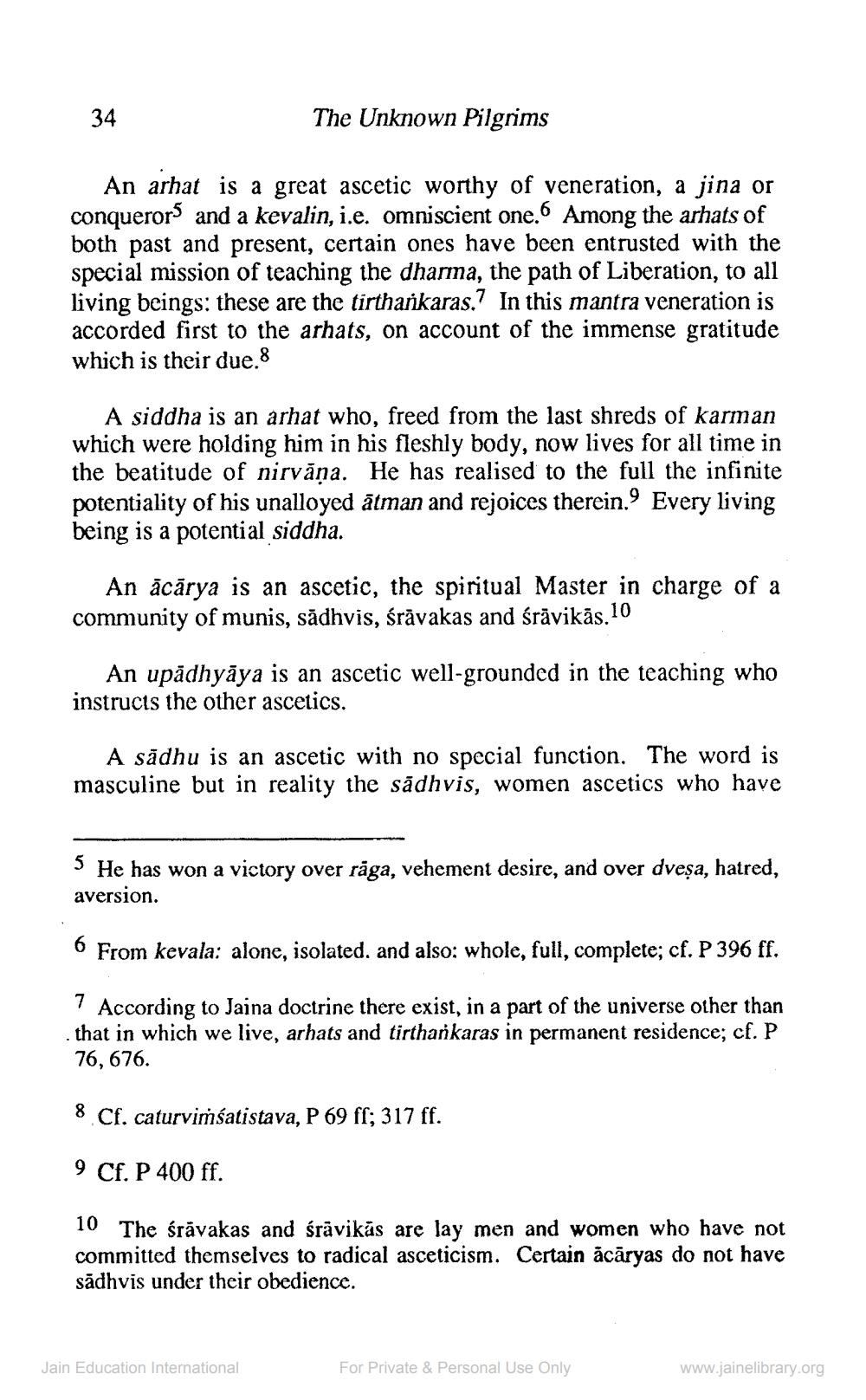________________
34
.
An arhat is a great ascetic worthy of veneration, a jina or conquerors and a kevalin, i.e. omniscient one.6 Among the arhats of both past and present, certain ones have been entrusted with the special mission of teaching the dharma, the path of Liberation, to all living beings: these are the tirthankaras. In this mantra veneration is accorded first to the arhats, on account of the immense gratitude which is their due.8
The Unknown Pilgrims
A siddha is an arhat who, freed from the last shreds of karman which were holding him in his fleshly body, now lives for all time in the beatitude of nirvana. He has realised to the full the infinite potentiality of his unalloyed ātman and rejoices therein.9 Every living being is a potential siddha.
An ācārya is an ascetic, the spiritual Master in charge of a community of munis, sadhvis, śrāvakas and śrāvikās.10
An upadhyāya is an ascetic well-grounded in the teaching who instructs the other ascetics.
A sadhu is an ascetic with no special function. The word is masculine but in reality the sadhvis, women ascetics who have
5 He has won a victory over räga, vehement desire, and over dveșa, hatred,
aversion.
6 From kevala: alone, isolated. and also: whole, full, complete; cf. P 396 ff.
7 According to Jaina doctrine there exist, in a part of the universe other than
that in which we live, arhats and tirthankaras in permanent residence; cf. P 76, 676.
8 Cf. caturviṁśatistava, P 69 ff; 317 ff.
9 Cf. P 400 ff.
10 The śravakas and śrāvikās are lay men and women who have not committed themselves to radical asceticism. Certain ācāryas do not have sādhvis under their obedience.
Jain Education International
For Private & Personal Use Only
www.jainelibrary.org




